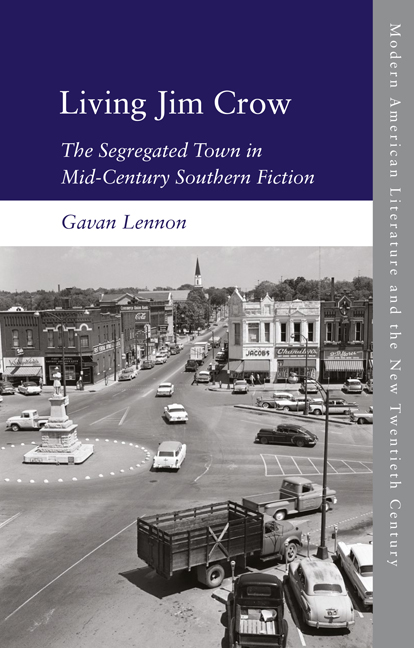Book contents
- Frontmatter
- Contents
- Acknowledgements
- Introduction: Uncovering a Poetics of Protest
- 1 Creators of the Small Town: Anthropology, Racial Etiquette and African American Fiction in the 1930s
- 2 The White Town/Coloured Town Paradigm: Lillian Smith’s Maxwell
- 3 An Anatomy of Critique: Byron Herbert Reece’s Tilden
- 4 The Milan Cycle: Carson McCullers’s Milan
- 5 Breaking the Pencil: William Faulkner’s Jefferson
- 6 Knowing How to Curse: William Melvin Kelley’s Sutton
- Conclusion: (De)Generative Ground – The Field and the Segregated Town
- Notes
- Bibliography
- Index
Conclusion: (De)Generative Ground – The Field and the Segregated Town
Published online by Cambridge University Press: 15 October 2020
- Frontmatter
- Contents
- Acknowledgements
- Introduction: Uncovering a Poetics of Protest
- 1 Creators of the Small Town: Anthropology, Racial Etiquette and African American Fiction in the 1930s
- 2 The White Town/Coloured Town Paradigm: Lillian Smith’s Maxwell
- 3 An Anatomy of Critique: Byron Herbert Reece’s Tilden
- 4 The Milan Cycle: Carson McCullers’s Milan
- 5 Breaking the Pencil: William Faulkner’s Jefferson
- 6 Knowing How to Curse: William Melvin Kelley’s Sutton
- Conclusion: (De)Generative Ground – The Field and the Segregated Town
- Notes
- Bibliography
- Index
Summary
Rachel Carson's pivotal book on ecology, Silent Spring (1962), was published in the same year as William Faulkner's final novel and William Melvin Kelley's first. Carson opens the text with a self-described ‘fable’ of American life:
There once was a town in the heart of America where all life seemed to live in harmony with its surroundings. The town lay in the midst of a checkerboard of prosperous farms, with fields of grain and hillsides of orchards where, in spring, white clouds of bloom drifted above the green fields.
Carson goes on to describe the ‘strange blight’ that ‘crept over the area’ and how ‘Some evil spell had settled on the community’. Carson ends her opening chapter, titled ‘A Fable for Tomorrow’, with an admission that she has constructed a synecdoche: ‘This town does not actually exist, but it might easily have a thousand counterparts in America or elsewhere in the world. I know of no community that has experienced all the misfortunes I describe.’ Carson chooses not to describe a real town that has suffered from unsustainable industrial practices because her point is better served by an amalgamated, representative construct. Carson puts her scientific fiction of an archetypal town to use as a warning to take action on ecological stewardship: ‘this imagined tragedy may easily become stark reality we all shall know.’ Carson was successful in instigating the change she wanted to effect with her writing, and Silent Spring led to the institution of bans on certain harmful pesticides for use in American farming. Crucial to Carson's extended metaphor of the town is the agricultural landscape that surrounds it. Silent Spring reflects on the inherent connectedness of the semi-urban community space of the small town and the agricultural industry that, literally and figuratively, feeds it.
Each of the towns I have mapped in Living Jim Crow is the centre of activity for a wider rural, agricultural economy. As sociologist Thorstein Veblen wrote in 1927, the American ‘country town’ exists in a symbiotic relationship to the neighbouring countryside:
To an understanding of the country town and its place in the economy of American farming it should be noted that in the great farming regions any given town has a virtual monopoly of the trade within the territory tributary to it.
- Type
- Chapter
- Information
- Living Jim CrowThe Segregated Town in Mid-Century Southern Fiction, pp. 210 - 219Publisher: Edinburgh University PressPrint publication year: 2020



